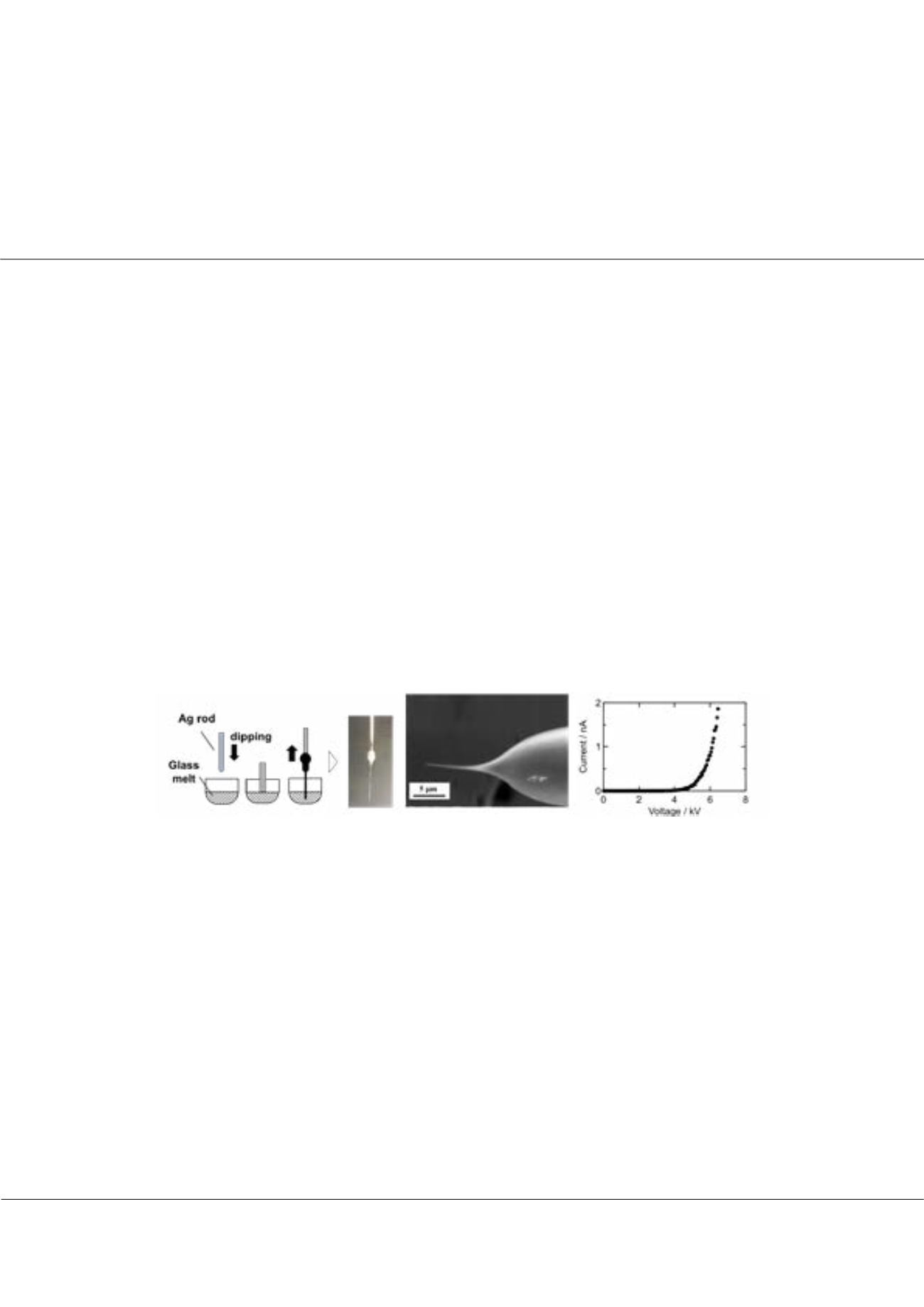

Page 117
conferenceseries
.com
Volume 6
Research & Reviews: Journal of Material Sciences
ISSN: 2321-6212
Advanced Materials 2018
September 04-06, 2018
September 04-06, 2018 | Zürich, Switzerland
21
st
International Conference on
Advanced Materials & Nanotechnology
Ag
+
ion emission from a sharp tip of Ag
+
ion conducting glass and Schottky-model analysis
Yusuke Daiko, Sawao Honda
and
Yuji Iwamoto
Nagoya Institute of Technology, Japan
I
on implantation is one effective method for surface modification of materials and has been applied for various field including
semiconductor industry and bio-technology. For example, proton (H
+
) implantation, so called proton therapy, has recently
used most often in the treatment of cancer, in which accelerated protons are irradiated directly to cancer cells. In general,
discharge plasma (gas) or liquid (e.g., liquid gallium (Ga) focused ion beam (FIB)) has been utilized for an ion source.
However, in these cases, side reactions (generation of radicals or various ions with different mass such as H
2+
and H
3+
etc.,) are
unavoidable. Also, ion (particle) accelerators are huge and expensive. On the other hand, ion emission from solid electrolytes
such as YSZ has also been considered. Hosono et al., showed that O
-
ions exist inside cages of 12CaO·7Al
2
O
3
(C12A7) crystal
and they successfully observed O
-
ion emission from the C12A7 by applying a high voltage. In the case of these ion emissions
from solid electrolyte, one crucial aspect is its high ion conductivity and ion emission current increases with increasing ion
conductivity of electrolyte. Compared with gas and liquid ion sources, ion emission mechanism of such solid-emitter is simple
and almost ~100% of emitted ions are O
-
ion in the case for C12A7. We have studied high ion conducting glasses and those
applications for ion emission gun. One big advantage of glass is its good formability and we anticipate such ion conducting
glasses can be applied for an emitter of ionic gun since the strength of the electric field is concentrated around the tip of the
sharp edged glass emitter. Here we show preparation and emission properties of Ag
+
ions from a tip of Ag
+
ion conducting glass
fiber. A good linear correlation was obtained between log (current) and square root of the voltage, suggesting the emission of
Ag
+
ion from the tip of glass fiber is expressed by Schottky model.
Figure:
Schematic diagram of fiber preparation, SEM image of the fiber tip, and Ag
+
ion emission current as a function of voltage.
Biography
Yusuke Daiko has his expertise in ion conducting materials including glasses, ceramics and organic - inorganic hybrids. He received Donald R Ulrich Award 2013
from International Sol-Gel Society (ISGS) and; Awards for Advancements in Ceramic Science and Technology in 2013 from 67
th
Ceramic Society of Japan (CerSJ)
for his research development about proton conducting glasses.
daiko.yusuke@nitech.ac.jpYusuke Daiko et al., Res. Rev. J Mat. Sci. 2018, Volume 6
DOI: 10.4172/2321-6212-C3-021
















